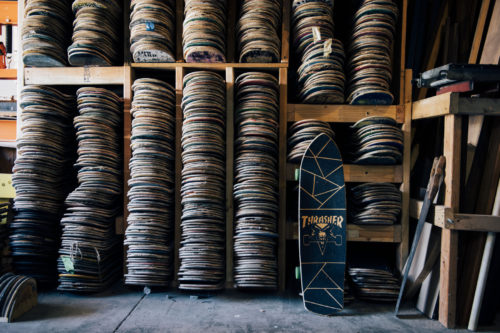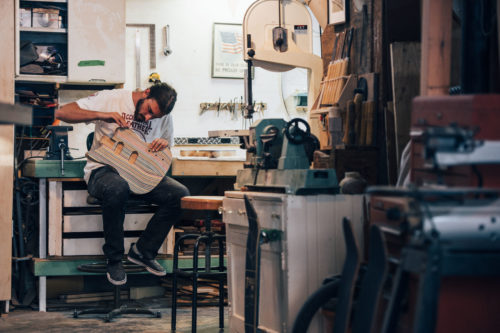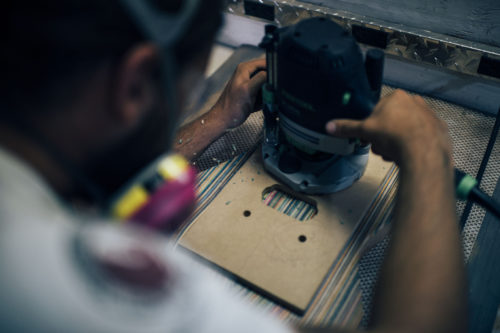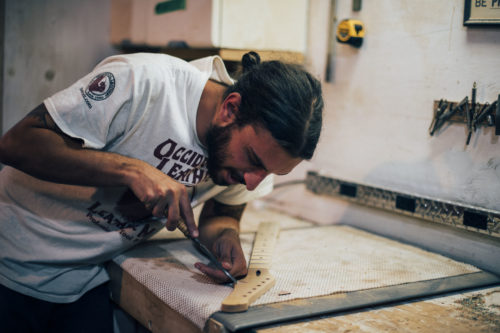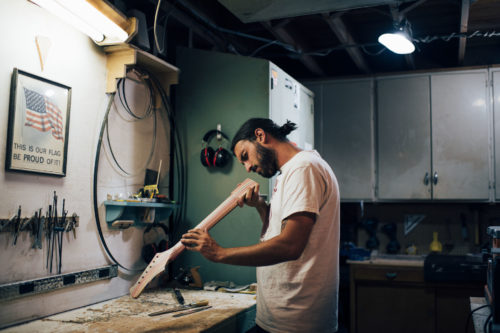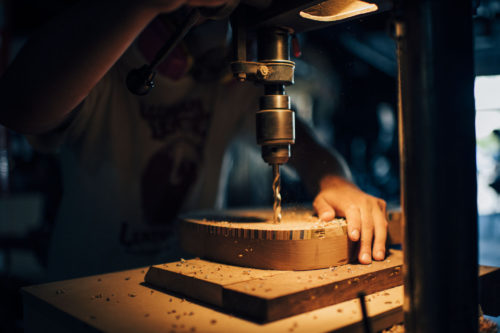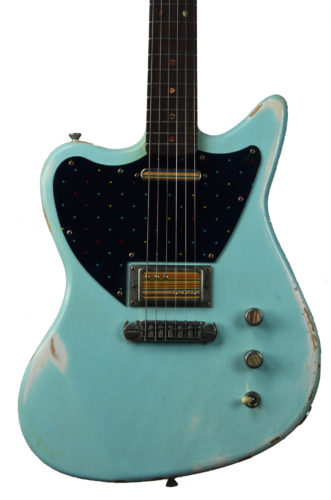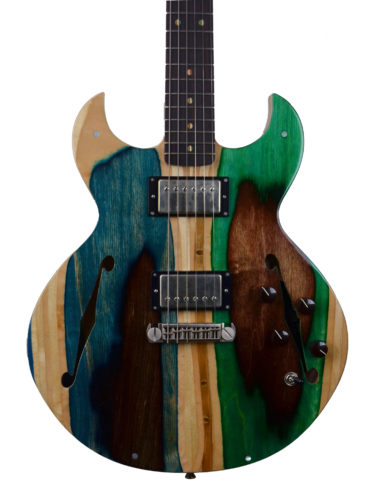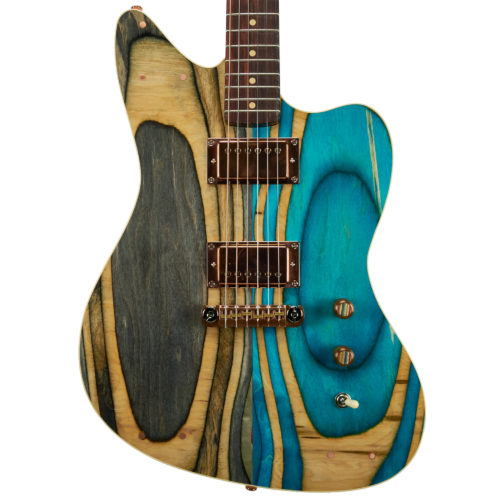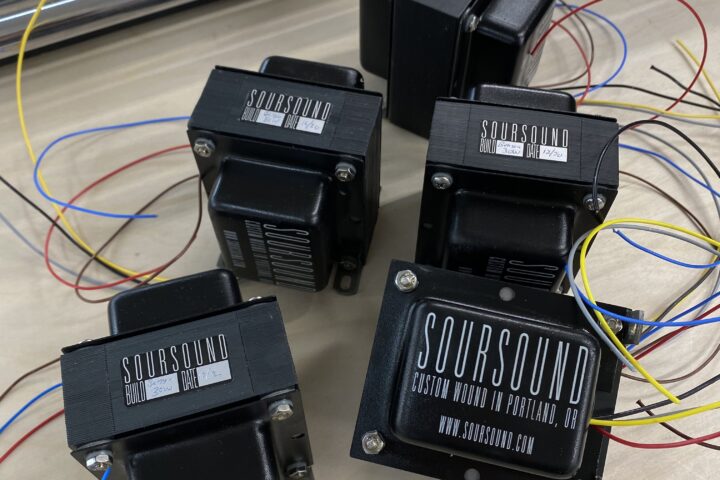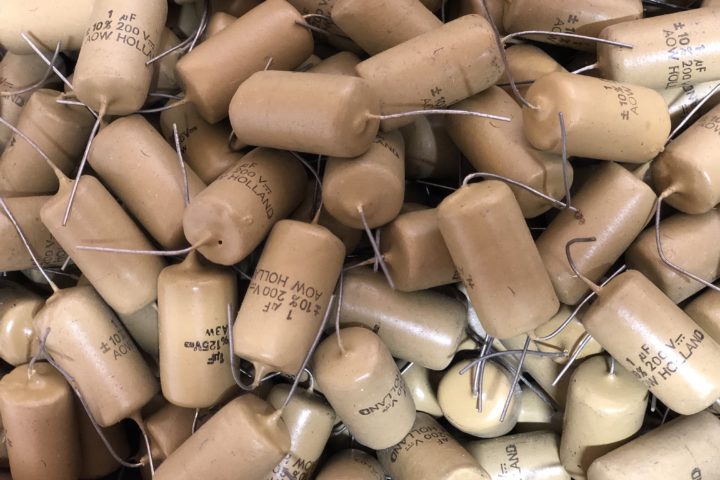Given how much we dig salvaged woods and skateboards, add Prisma Guitars to the “What took you guys so long?” list. Nick Pourfard’s Bay Area guitar shop is cranking out one-of-a-kind guitars that more or less compel writers to break out the “shredder” and “Thrasher” puns… hopefully that takes care of that obligation and we can get to the business of talking to Nick about his instruments, classic and original solid and hollow body designs, typically loaded with McNelly pickups, often sporting Mastery hardware, always eye-catching.
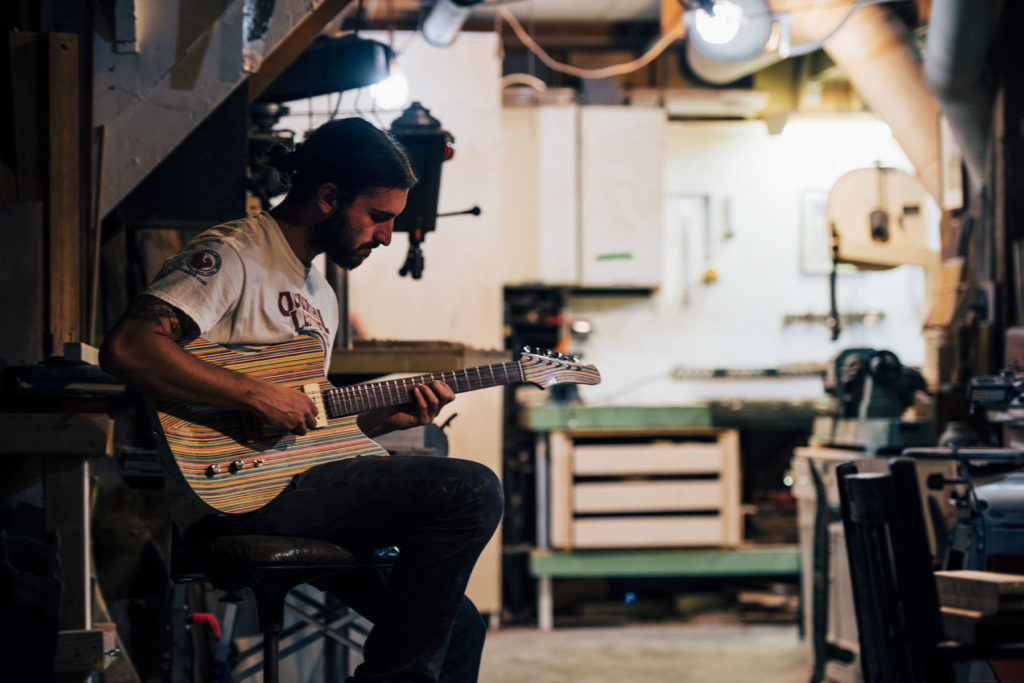
Fretboard Journal: So… skateboards… You’re mostly using donated/broken boards? Is that how you started?
Nick Pourfard: I started using my old skateboards. That was the first guitar I made. From there, I got donations from friends and the community. Skate shops and people all over the world send me their boards now. The skateboard community is really supportive. I have built a bunch using solely professional skateboarders boards, too.
FJ: Can you tell us how you construct the bodies and necks? Laminating process, dyes, etc…
NP: Skateboards are typically dyed in factory and once you create a piece of lumber with the boards, the dye remains. I basically glue up a big block of skateboards and begin working the block from there. Pretty much 99% of our guitars are made either entirely out of skateboards, or just the top. I typically use alder or African mahogany for the bodies and necks. Combining these woods with specific patterns made from the skateboards often creates a cool effect. It tends to tone down the skateboards look and help it look and sound like something more traditional. The Sunset guitars are made with alder, but we do use little inlays and accents throughout.
Sometimes we build the necks completely out of skateboards. This creates that striped pattern running down from the headstock to the heel. It’s really cool! Even thinking about this construction, it isn’t so foreign–Martin has been laminating necks for years.
FJ: How many boards does it take to build a guitar?
NP: It really depends on what I’m trying to accomplish. I’ve used as little as four and as many as 50. We have lots of different patterns that are created with different numbers of boards. For example, the striped pattern we use tends to take a lot more boards than the more tie-dyed look.
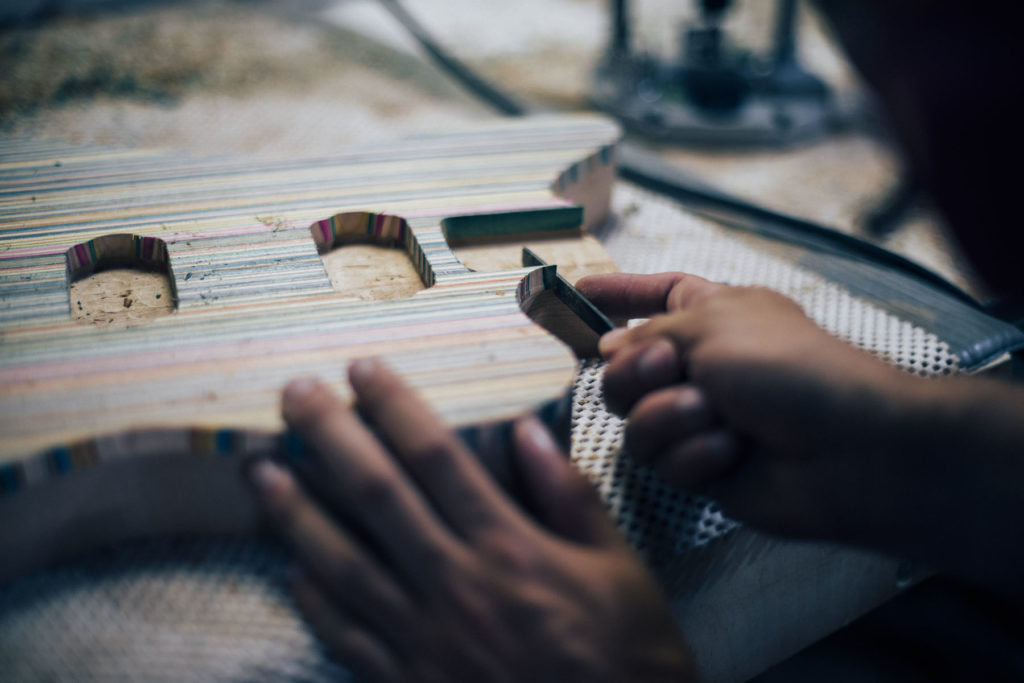
FJ: Where do you find inspiration?
NP: I have a folder on my computer of photos of guitars that I think look cool or have interesting setups. Every once in a while I sit down and take elements from them that I think would work well.
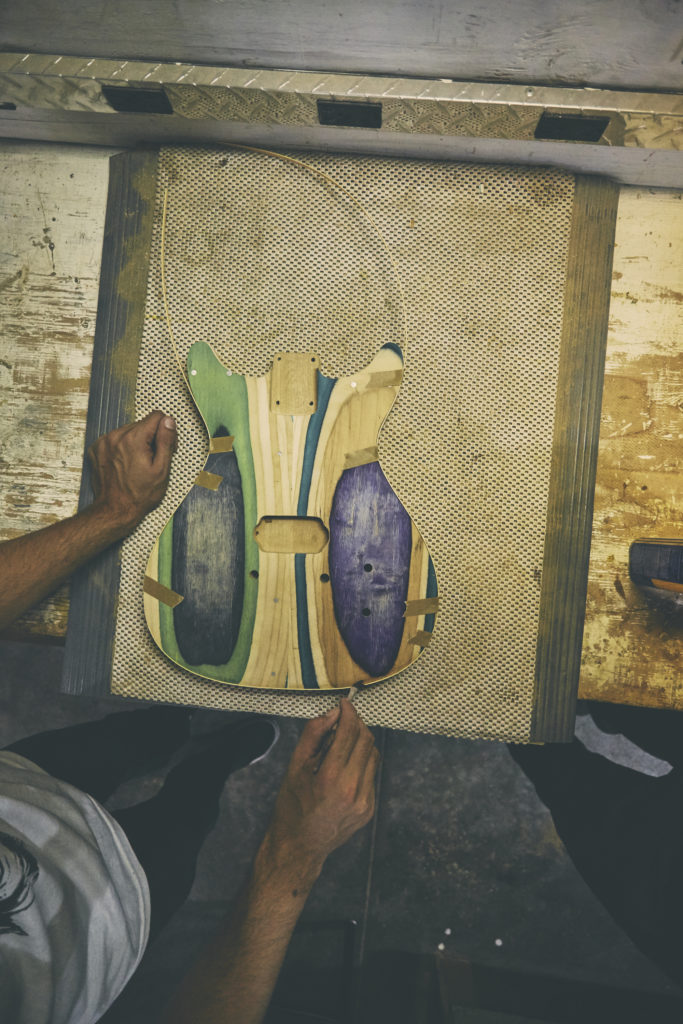
As for the brand, I always wanted to be different and just focus more on what I felt was stronger more unique content and branding. For example, demo videos are cool and you may learn a lot of technical stuff, but I like to give the audience more credit. I think they can figure that stuff out without shoving it in there face. That’s why I created the Shop Session videos. Bands play their songs on our guitars in our woodshop. It’s fun and you can really see and hear how the guitars sound in a more applicable setting. Plus, since the music is good, it isn’t limiting to guitar world either.
FJ: Do you have a sense of the folks who play your guitars–are there a lot of skaters, or just players drawn to the instruments? Are folks drawn to the “recycled” angle?
NP: They tend to be older guys who used to skate and feel some sort of connection to it still and now play guitar mostly. The recycle thing tends to bring in a more collector type of crowd. There are a lot of different types of people overall!
FJ: What’s on your bench right now?
NP: I’m building a brand new custom model, yet to be named, for Jared Mattson of the Mattson 2. It is a smaller bodied guitar with no skateboards and a tortoise guard. We loaded it with a mini humbucker neck pickup, Mastery tremolo and bridge and Emerson guts. It is gonna be a show stopper.
FJ: Do you have a favorite guitar that’s crossed your bench?
NP: I love building our Sunset Series. It has minimal skateboard detail while paying homage to traditional guitar aesthetic we are so used to.
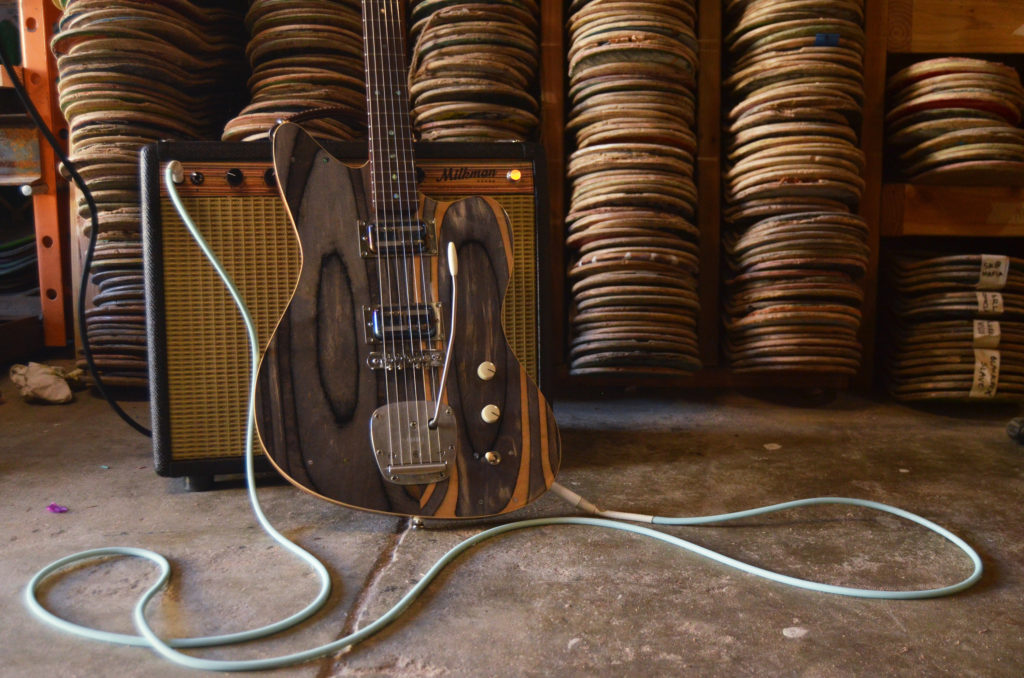
FJ: Can you tell us about your shop?
NP: My shop is in the Sunset of San Francisco. I’ve been working out of it since 2014, when I was still in school and probably built just two guitars that whole year because of my studies. After I graduated, I put all my time into Prisma.
FJ: We’ve noticed you’ve added a few dealers; what’s the breakdown, dealer to direct/custom? What’s the typical wait for custom orders?
NP: We have a lot of awesome dealers now in different parts of the world. The dealers allow me to reach a customer base that I wasn’t reaching before. They often have our stuff stocked, but are able to take custom orders as well. This enables people to go in and test out the guitars. If they like it, they can put in an order with that dealer right then and there. Custom orders take between 10-15 weeks to complete, depending on each build and volume of production at the time.
FJ: Are there any upcoming projects that you’re particularly excited about?
NP: We’re going to start building guitars without skateboards because we feel our brand, company, and shapes are strong and unique and they don’t always have to have the skateboard aspect. Of course, skateboard guitars will always be an option, but we want to give customers choices.
Plus, on a side note, I got some other companies starting up in furniture, textile, and lighting design…
